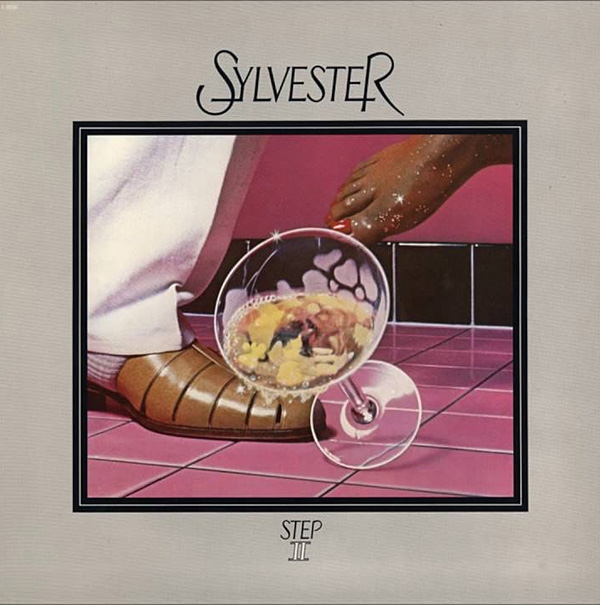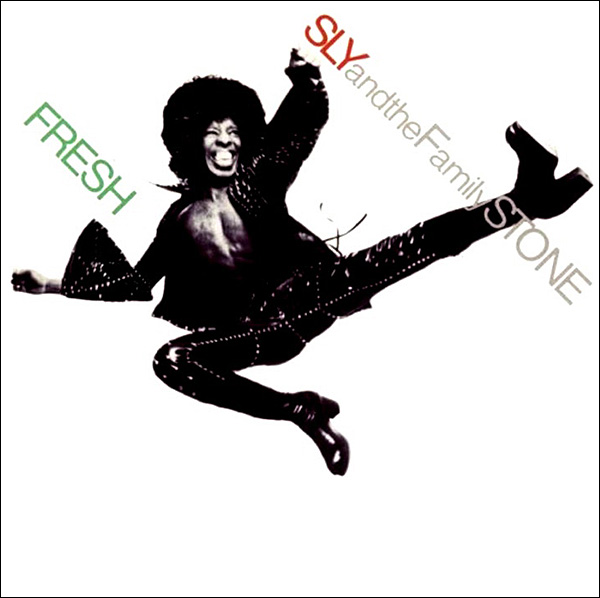| Columns Retired Columns & Blogs |
One, two, three, kick!
Come on everybody, clap your hands
Ooh, you're looking good
Are you having a good time?
I sure am
Do you like soul music?
(No)
Well, do the trouser press, baby! One, two three! [KICK!]

"It's a fabulous party! . . . Look at all the fabulous people."
"You wanna dance?" ("Yes I'd love to . . .")
"Let's party a little bit." ("All right . . .")
And off we go with what this camp intro promises will be just another computer-produced piece of disco music that doesn't reach any parts of the body higher than the feet. And yes, the ingredients are all present in the right proportion: four-in-the-bar bass drum and snare; "aerosol" offbeat hi-hat; liberal helpings of synthesizer, repeat echo, bass guitar tied to walking—or, rather, strutting—boogie octaves; and lyrics pared to the minimum necessary to propel the beat along.
But as we get further into "Dance (Disco Heat)," a 1978 hit from the flamboyant androgyne Sylvester, it appears that mind fodder has found its way into the mix after all. The boogie bass octaves, foursquare drums—real drums (remember, this was made in 1978)—and offbeat hi-hat lead to a complex, harmonically ambiguous verse that modulates from B-flat to Gm to D to E-flat before finding its way back to a joyful B-flat—but making it sound like a brand-new key—for the chorus. No three-chord trick stuff here, but rather, Irving Berlin in John Travolta's white suit! Another verse follows the chorus, and then we really get down!
Now the standard disco chorus has one purpose only: to give you something solid to lock on to while your Bud Lite–crazed body lurches around the dance floor like an epileptic gibbon. It tends, therefore, to be reduced to the maximum complexity capable of being appreciated under typical disco lighting conditions, a one-chord chant that's no more than chewing gum for the feet. But here again in "Disco Heat" is evidence of a "mind behind." The question-and-answer singing is interspersed with episodes of synth, sound FX, and phased clavinet—that electronic descendant of the harpsichord that reminds you that keyboards are percussion instruments. The bass guitar reinforces the new/old key by boogying up from G in octave semitones every four bars. Okay, we all know that's No.2 from the Larry Graham book of bass-guitar clichés, but when supporting that mixture of gospel chant and techno-freak funk machines, your brain is dancing as much as your feet.
"So what?" you might ask, thinking that a pair of diamonds among the black stuff don't turn a fuel merchant's back yard into 47th Street. Certainly, I'd agree that most purpose-built disco has about as much in common with music as the National Enquirer has with journalism, but there are, in fact, many diamonds like the Sylvester recordings above to be discovered among the dross. A track will burst from the bounds imposed by the strict form as a whole adding up to very much more than the sum of its parts.
Which is exactly what has happened with popular music since the beginning of time. Produced within tight guidelines—after all, it exists only to generate income for the record industry, and they don't want to include more substance than is absolutely necessary—the discipline imposed on the creative mind by those commercial confines can be unexpectedly beneficial. Commissioned to write fluff for musical comedies, the "greats" of the first half of the 20th century—Arlen, Berlin, Gershwin, Kern, Porter, Rodgers—produced classics. Elvis sprang from the over-plowed ground of country music. The Beatles burst from the frayed straitjacket of a three-guitar-and-drums form. Phil Spector decided that a pop song's three minutes were plenty enough time to produce a masterpiece. Little Richard, Sam Cooke, James Brown, and Otis Redding strayed from the religious railway tracks of gospel to invent soul music. Some creative minds even managed to escape the tightest shackles of "disco."
Sylvester entered the discotheque via the gospel entrance, but one who strode in confidently from the door marked ACID ROCK (and who'd laid the foundation stone in 1968 with a hit called "Dance to the Music") was another Sylvester: Sylvester Stewart, aka Sly Stone.

Sly and the Family Stone's Fresh (Epic EPC 69039), released in 1973 after the band had peaked, includes a track I consider one of their finest: a reworking of the old Doris Day hit "Que Sera, Sera." Bassist Larry Graham had already departed, but his replacement, Rusty Allen, had the appropriate chops together for the intro as he bubbles and rolls down in semitones over a syrupy, Leslie'd Hammond organ and a chunky Fender Rhodes for a slow, bluesy cadence on the dominant. Ace session drummer Andy Newmark offers a press roll on the snare, and . . .
"When I was just a lit-tle girl . . ."
The voice—it can't be, but it is—is Doris Day's. Still a little-girl voice, but Day now slowly rolls the lyric around her mouth with her tongue. Forget the "All-American Virgin" business—this lady knows which way is up as she metamorphoses the sickly piece of 3/4 '50s ephemera into a smolderingly slow 6/8 torch song. And here's Sly in the chorus, coming on like a sharp black stud. They must have loved this recording in Birmingham, Alabama.
Despite the power of Sly's production, the song is actually taken pretty straight, the only major change being the recasting of the end of the chorus from a complacent, upturned upbeat "Que sera, sera" to a more appropriately despairing series of leaning appoggiaturas. If constraints can sharpen the creative focus, then no constraints can be tighter than those imposed by a played-to-death showbiz standard. The results show that Sly's talent responded magnificently to the challenge. Look for the album in the cutout bins and enjoy!—John Atkinson

One, two, three, kick!
Come on everybody, clap your hands
Ooh, you're looking good
Are you having a good time?
I sure am
Do you like soul music?
(No)
Well, do the trouser press, baby! One, two three! [KICK!]

"Play That Funky Music" ......... Wild Cherry :-) ...........

"Dance to the Music" .......... Sly & The Family Stone :-) ..........